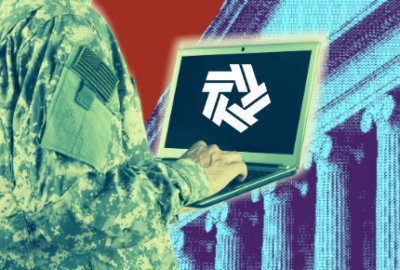OIG finds weaknesses in VA’s financial management systems
VA's Office of Inspector General has found that the department worked hard to document its handling of the money. But weaknesses in VA's financial management sy...
Best listening experience is on Chrome, Firefox or Safari. Subscribe to Federal Drive’s daily audio interviews on Apple Podcasts or PodcastOne.
Congress provided the Department of Veterans Affairs with nearly $20 billion to take on COVID-19. The money came with the requirement to account for it. Now VA’s Office of Inspector General has found that the department worked hard to document its handling of the money. But weaknesses in VA’s financial management systems raise questions. For more, VA’s deputy assistant inspector general Nick Dahl spoke to Federal Drive with Tom Temin.
Interview transcript:
Tom Temin: Congress provided the Veterans Affairs Department nearly $20 billion to take on COVID-19. The money came with the requirement to account for it. And now VA’s Office of Inspector General has found that the department worked hard to document its handling of that money. But weaknesses in VA ‘s financial management systems do raise some questions. For more, VA’s Deputy Assistant Inspector General Nick Dahl. Mr. Dahl, good to have you on.
Nick Dahl: Good morning, Tom, thanks for having me.
Tom Temin: And tell us what it is you were specifically looking for. This was partly about the accountability itself of the money, but also partly about VA’s ability to even carry out the accountability with all the willing intention of doing so.
Nick Dahl: Our review objective on this, it was an early look at how VA was accounting for COVID. And our review objective for this first project we did was to assess the Veterans Health Administration or VHA’s internal controls for the accuracy of tracking and reporting at the transaction level of detail for how they spent these COVID funds.
Tom Temin: And what was your overall assessment of how they were doing?
Nick Dahl: Well, they were meeting the requirements for weekly and monthly reporting. But we certainly had concerns about the accuracy and completeness of the reporting.
Tom Temin: And what gave rise to their inability to be totally accurate?
Nick Dahl: Well, VA does rely on its antiquated financial management system. It’s not really a nimble or modern day financial management system. So it does not give VA at the top level real transparency or visibility over what is happening at the facility level. So VA’s Office of Management, which was responsible for the reporting to OMB and Congress, was relying on the controls at the local facility to ensure the data was complete and accurate. So that’s really what it came down to. It’s very labor intensive for VA at the Office of Management level to get to the transactions. They really would need to work with each of the 170 or so medical centers to find out what the transactions were at those facilities.
Tom Temin: That’s almost a theme of VA, it’s so deeply embedded in its federated nature that when it comes to the VISTA system or accounting systems, everything is pieces. And it’s very hard to roll up what’s going on to the departmental level, isn’t it?
Nick Dahl: Absolutely. We see it time and again.
Tom Temin: And just some odd details that came out in the report. There were fields in the reports that had negative dollar amounts where there should have been positive dollar amounts. What causes an oddball thing like that to happen?
Nick Dahl: Well I’ll give you two parts to that answer. VA reported to Congress and OMB that the negative dollar amounts were related to their early COVID response efforts when incorrect accounting codes were used. And because the incorrect accounting codes were used, they needed to make adjustments or transfer some of the transactions to ensure that they use the correct codes. The second part of that, though, is when we did question VA officials, they couldn’t really definitively say what those negative dollar amounts represented. It was some level of speculation that, you know, at least some of them were transferred from an incorrect accounting code to a new accounting code. But it really could have been system errors or credits from vendors. There really is no way of knowing without really drilling into the data.
Tom Temin: So the result is then that they have to do a lot of rework on reports that they spent a lot of man hours producing in the first place.
Nick Dahl: They weren’t. It’s just so many manual processes involved in getting to the true nature of some of these transactions.
Tom Temin: We’re speaking with Nick Dahl, he’s deputy assistant inspector general at the Veterans Affairs Department. And another odd thing that I noticed, at least as of December or six months, seven months ago, they’d only spent about a third of the money. They obligated more of it, but they hadn’t actually spent that much of it. And so what happens? Do they give it back, or does it get repurposed? Wouldn’t you have to go to Congress to reprogram it?
Nick Dahl: It will be interesting. My understanding, and I apologize for not being 100% solid on this, but my understanding of the CARES Act funding is it does need to be spent by this September 30 if it’s going to be used. I expect that VA will end up spending most of it. But if they don’t spend it by the end of the fiscal year, I assume it would have to be turned back.
Tom Temin: Well, they wouldn’t be a good federal agency if they didn’t rush it out the door by September 30. That’s me saying it, not you, I wouldn’t put that thought on you. But the question is, what are your recommendations? How do they get, you know, not just for the COVID spending money, but for all the VA money? It sounds like they need to do some serious work on the system level here.
Nick Dahl: Yeah, and I’ll give you two parts of that as well. We did recommend that VA consider the inherent risks due to VA and VHA’s outdated financial information technology infrastructure, and develop procedures to validate the data at the program activity level rather than just at the summary funding level. And they responded that they would. But, you know, you bring up a good point about FMS and the challenges it presents. They are going through a financial management business transformation, where they are attempting to bring a system called iFAMS, which will be a modern integrated financial and acquisition management system online. Now, it’s probably a 10- year effort, Tom. And we’re probably about three years into that effort. So it’s going to be, right now, the current plan is to have everyone in VA online sometime in 2027. They have been bringing it online in pieces. It’s in use for NCA, the National Cemetery Administration, and parts of VBA. But VHA, there’s still a few years away from bringing that online. You know, I would say for accounting purposes, VHA is the most complex organization within VA.
Tom Temin: Sure. And again, this is a little bit outside the scope of the report, but from what you’ve seen, it does work when it is installed at cemetery administration? And to the extent that it is at VBA?
Nick Dahl: We are currently conducting our first review right now of the implementation of iFAMS at National Cemetery Administration. You know, I don’t feel like I can comment on it right now. But it’s being used, I will tell you that.
Tom Temin: All right. And in many ways, it sounds like a parallel to their electronic health record system, where you’ve got to just take it step by step. And it seems like just looking at it, again, from the IG level that they have taken on a lot of modernizing on multiple fronts.
Nick Dahl: It’s a huge undertaking. With EHR and iFAMS being two huge systems, they’re also looking to bring a logistics system online. I’m hearing talk about an overall HR system. I guess it’s a result of the fact that they’re behind. I assume you are familiar with some of the past difficulties updating the financial management system. They have tried a couple times in the past and have not been successful. So they’re probably a good decade behind on the financial system.
Tom Temin: And just getting back to the COVID money, though, with what you are able to see it looks like it was spent in the way that it was intended to be spent and used and obligated, ultimately?
Nick Dahl: Right. We don’t have any indications that there were problems with the spending. I will say we’re just kicking off a project now, where we are going to go to a specific network, which is a group of medical centers in VHA. And then this one, we’re actually going to go down, we ourselves, are going to go in and do some testing at the transaction level to see how the funds were spent and see whether the spending was appropriate. So stay tuned for that.
Tom Temin: So that’s like looking at the rivets to seeing if the Titanic itself is going to float.
Nick Dahl: You got it.
Tom Temin: Nick doll is deputy assistant inspector general at the Veterans Affairs Department. Thanks so much for joining me.
Nick Dahl: Thanks for having us. Appreciate your interest in our work.
Copyright © 2024 Federal News Network. All rights reserved. This website is not intended for users located within the European Economic Area.
Tom Temin is host of the Federal Drive and has been providing insight on federal technology and management issues for more than 30 years.
Follow @tteminWFED






